The Future Is Here: Artificial Intelligence Panel Comes to Saratoga
SARATOGA SPRINGS – 5G. AI. Blockchain. The possible eradication of disease and abolishment of poverty. The potential wiping out of your job. So many questions. A free, city-based “Lunch and Learn” event with a focus on artificial intelligence will take place Thursday, Jan. 24 at the Saratoga Springs City Center.
“The AI Opportunity: Developing an AI Ecosystem in Upstate New York” will include a panel discussion, and a Q & A session: What is artificial intelligence? Why does AI matter? What opportunities does it present locally and regionally?
Panelists will share ideas, experiences, and viewpoints about AI technology, research and development, ethics, and policies and will be moderated by Michele Madigan, city Commissioner of Finance and chair of the Saratoga Springs Smart City Commission.
“This series—on topics such as artificial intelligence, blockchain, innovation, and energy—works to position the region to spur economic development by leveraging applications of emerging technologies to practical business challenges,” Madigan said, in a statement.
Marty Vanags, president of Saratoga County prosperity Partnership, and one of the sponsoring organizations of the event, points to things like the Apple Watch, robot vacuums and Alexa as things inside the home that depict AI is already here.
“On my phone I have The Weather Channel App. Algorithms are generating information and pretty darn accurate information about what the weather is going to be like into the future, from temperatures on an hourly basis to how much and where snow is going to fall,” Vanags says. “I was at a consumer electronics show last week and Samsung has something called The Hub - this giant screen on the refrigerator that organizes your family activities, totally interactive.
Do you watch movies on Netflix? That data is put to use for the next time you want to watch a movie and shows up in recommendations: because you watched THIS movie, try THESE movies. “It may not be an exact fit, but the technology, that algorithm will learn over time,” Vanags says. “Machine learning, which is part of Artificial Intelligence. It keeps re-defining until it really begins to know and understand what it is you like.”
It is anticipated that the deployment of 5G will lead to the mainstreaming of autonomous, or self-driving vehicles.
Asked whether there may be a danger with all the gathering of data that may lead to humans not being exposed to new things, or perhaps other downfalls, Vanags says, “technology needs to have limits and controls, just like anything. It’s an interesting conundrum. We like our technology we like our conveniences and at the same time we don’t want to be felt imposed upon by companies that are using that technology.”
An “Open Letter” penned in 2015 and signed by the likes of Steve Wozniak, co-founder of Apple, the late Stephen Hawking and thousands of others, the importance of focused research to maximize the societal benefit of AI was stressed. “Our AI systems must do what we want them to do,” the Open Letter states. “The potential benefits are huge… the eradication of disease and poverty are not unfathomable. Because of the great potential of AI, it is important to research how to reap its benefits while avoiding potential pitfalls.”
The future impact of AI is also anticipated to cause the elimination of some jobs - taxi drivers and truck drivers as examples among them - when self-driving vehicles become mainstream.
“It’s hard to predict. I’m not predicting this, but some people have predicted that you will go to a restaurant and essentially robots will take your order,” Vanags says. “I don’t know, I think the human element is still important and I like my waiters and waitresses at Cantina, so I don’t see that necessarily, but there could be applications in AI that predict what I might order, an Artificial Intelligence application that actually generates the food that I’m going to eat, but there are a lot of costs involved and I think that’s well into the future.”
“The AI Opportunity: Developing an AI Ecosystem in Upstate New York,” a Lunch and Learn session of the city partnering with IgniteU NY, will be held noon to 2 p.m. on Thursday, Jan. 24 at the Saratoga City Center. Lunch will be provided. Panelists include Bob Bedard, the President and CEO of the software company deFacto Global, Inc., Dr. Craig Skevington, CEO of managed service provider STEADfast IT, and Colin Garvey, a Ph.D. student at Rensselaer Polytechnic Institute (RPI) specializing in AI risk governance.
The event is free and open to the public, but it is limited to 100 attendees. For more information, GO HERE.
City Events: Martin Luther King Celebration Weekend
Friday, Jan. 18
The 4th Annual Dr. King Challenge, Win and Place Room, at The Holiday Inn, 232 Broadway. 7 p.m.
Opening Reception, light finger foods and cash bar. 8- 10 p.m. - Micro-performances in honor of Dr. Martin Luther King, Jr., expressing the critical, "in-our-face" realities of our time - by regional performance artists, followed by dancing to the world jazz beat sound of Heard.
Saturday, Jan. 19
Caffé Lena, 47 Phila St. - 3 p.m. “Shout It Out!” with Garland Nelson. A historical, interactive African-American musical experience; 5 p.m.
Yaddo Presents: "Empowering Artists of Color" A Conversation with Kima Jones; 7:30 p.m. Creative Action Unlimited: a 40-minute staged reading performed by a cast of women who share their personal experience with issues of race, class and gender.
Sunday, Jan. 20
Workshop: Equity, Inclusion, and Understanding Implicit Bias with Ray Anderson, 2 -p.m. at Saratoga Springs Public Library, 49 Henry St.
Aretha Franklin Tribute and The Heavenly Echoes, 7 p.m. at The Parting Glass, 40 Lake Ave.
Monday, Jan. 21
Day of Service Volunteer Project, 9:30 a.m. to 12:30 p.m., at Dutcher Community Room, Saratoga Springs Public Library.
CommUnity Celebration with Special Guest Artist/Activist Daryl Davis, 2 p.m. at Presbyterian New England Congregational Church, 24 Circular St.
An Evening of Music and Conversation with Daryl Davis, 7:30 p.m. at Caffe Lena. Tickets $15, to benefit MLK Saratoga. Advance purchase recommended for this event.
Events are free and open to the public, unless otherwise noted. For more information, go to: https://www.mlksaratoga.org/celebration/
Singer-Songwriter Returns to Stage of Musical Origin on Jan. 18
SARATOGA SPRINGS – Amanda Platt calls Asheville, North Carolina home these days, but a decade-and-a-half and six albums ago, the then-musical novice would drag her banjo to Caffè Lena on Open Mic night, building a foundation for her life in the arts. Platt, with her band the Honeycutters, returns to the stage of her formative years Jan. 19.
“Caffè Lena is where I first learned to perform, the first place I started playing my songs out,” recalls the singer-songwriter, who attended classes at Skidmore College, worked in Ballston Spa and took lessons on playing the banjo from local musicians Trish Miller and John Kirk.
“I started playing at the Thursday night Open Mic in the winter of 2005 and I found a real receptive community at Caffè Lena. All the regulars at the Open Mic were very welcoming and kind to me and made me feel that I wasn’t being totally ridiculous to want to write songs and sing them,” Platt says. “It’s really where I started everything, where I had my first real show and where I made a promise to myself that I was just going to keep going.”
As a band, the Honeycutters – billed as a country roots group who blend Honky Tonk music with Appalachian folk – have released five albums. Platt also has a solo record to her credit and the band is readying a live album for release in June.
The date in Saratoga Springs is sandwiched between tour stops in New Haven, Connecticut and Washington, D.C., and just before the band crosses the Atlantic for shows in Germany and The Netherlands in March. “People are really into American music over there,” says Platt, who grew up on Hastings-on-Hudson. her father has a musical background.
“My Dad used to make music professionally in his twenties. “After he got married, my mom said: you’re going to figure something else out,” says Platt, with a laugh. “He went to law school and became an attorney, but music has stayed in his life, playing weekends.” Her dad lives in nearby Columbia County and may sit in with the band for a few songs at Caffè Lena. The show will also mark Platt’s first return since the café underwent renovations. “I am excited to come back and see it,” she says.
Amanda Anne Platt & The Honeycutters perform at Caffè Lena at 8 p.m. on Friday Jan 18. Tickets are $20 general admission, $18 café members, $10 students and kids.
Coming to Caffe Lena: A Gentleman and a Music Legend
SARATOGA SPRINGS – What can one say about David Amram?
He’s played the French horn in the legendary jazz bands of Charles Mingus, Dizzy Gillespie and Lionel Hampton. He created and performed in the first ever Jazz/Poetry readings in late 1950s New York with his friend Jack Kerouac. He worked with Allen Ginsberg in the film “Pull My Daisy,” composed the scores for “Splendor In The Grass,” and “The Manchurian Candidate,” served as the Composer and Music Director for the Lincoln Center Theatre, and was appointed by Leonard Bernstein as the first Composer In Residence for the New York Philharmonic.
Locals may recall his recent appearance at SPAC with Willie Nelson at Farm Aid, or his emotionally stirring performance at the Lake George Jazz Festival in September 2001, when in the immediate days following 9/11, Amram brought together the T.S. Monk Sextet and Glens Falls Symphony Orchestra for a musical collaboration in Shepard Park that marked, for many, the first public event they attended in the wake of the Sept. 11 attacks.
Amram’s collaborations in a storied career have included the likes of Arthur Miller and Johnny Depp, Hunter S. Thompson and Bob Dylan. And topping it off, he IS the nicest guy you could ever meet – a point punctuated by his late friend Jack Kerouac, who for his cheerful disposition. dubbed Amram “Sunny Dave.”
Amram will perform Friday, Feb. 1 at Caffe Lena. Tickets are $35 general public, $32 café members, $14.50 students and kids.
City Investment in Arts Brings Economic Return
SARATOGA SPRINGS – In early 2018, the City Council authorized taking “a first step” to target the arts as a potential economic driver for the local community. Early indications are that the plan is working.
“To me, the arts are a huge part of economic development,” said city Finance Commissioner Michele Madigan. “It’s untapped.” To that point, the city in 2018 awarded $14,000 as a one-time economic development grant to the Saratoga Performing Arts Center, which the organization put to use by retaining the New York City based Rebecca Davis Public Relations firm to market the arts and cultural offerings of Saratoga Springs to those living outside the region.
The plan was to begin a campaign to reach the “cultural tourist” - explained SPAC President and CEO Elizabeth Sobol – “to market ourselves, to get the message out that Saratoga is one of the most extraordinary cultural destinations in the world.” The “cultural tourist” spends 60 percent more than the leisure tourist, Sobol added.
Bloggers and other travel writers were invited to Saratoga Springs, taken for tours of the Tang Museum and Caffe Lena, the Yaddo arts colony, and the mineral springs. They ate meals downtown and watched events at SPAC. Sobol pointed to a piece recently published in BBC magazine - “one of the most important international publications speaking to the cultural consumer,” she said, that showcased Saratoga Springs as a cultural destination and acted as a positive example of the marketing outreach.
Commissioner Madigan calls the investment in the arts as economic driver as “having some skin in the game,” and said that investment could play a role in the large upward trend of sale tax figures in the city in 2018.
“We look at the sales tax for last 12 months – and we don’t have the full year of 2018 in yet – but the last 12 months, year-over-year, sales tax is up more than it’s ever been, it’s up 10.1 percent,” Madigan said.
The commissioner credited Sobol for also doing a lot to bring SPAC as a collaborator into downtown Saratoga Springs year-round. “There are multiple ways to gauge return on economic development, but it’s very significant, and this (return on investment on arts) is just one way we would measure economic success,” Madigan said.
Last month, SPAC announced it will spend $195,000 of a $1.695 million state it was awarded grant by the Regional Economic Development Council Initiative, on a multi-media marketing campaign slated to launch in 2020. That campaign will complement the public relations campaign that SPAC and the City of Saratoga Springs initiated in 2018 to promote Saratoga as a cultural destination.
Last year’s city investment was a one-time economic development grant based on city reserves and an analysis will need to be conducted to determine if an investment in the arts, whether it involves SPAC or another entity, will be made in 2019.
SPAC Announces 2019 Classical Season: NYCB Returns July 16-20
SARATOGA SPRINGS – The Saratoga Performing Arts Center (SPAC) announced its 2019 lineup which features the summertime return of the New York City Ballet, The Philadelphia Orchestra, and The Chamber Music Society of Lincoln Center.
The New York City Ballet residency (July 16 – 20) once again features four distinct programs including the story ballet Coppélia, which was premiered at SPAC, an evening dedicated to Balanchine and Tschaikovsky, and a program showcasing four SPAC Premieres by 21st century choreographers, highlighted by Kyle Abraham’s The Runaway, which fuses modern and classical technique and an eclectic soundtrack mixing composer Nico Muhly, singer James Blake, and hip-hop artists Jay-Z and Kanye West. The annual New York City Ballet Gala, on Saturday, July 20, will showcase George Balanchine’s Apollo, Christopher Wheeldon’s This Bitter Earth and a new piece by NYCB Resident Choreographer and Soloist Justin Peck.
New York City Ballet - Tschaikovsky and Balanchine - Tuesday, July 16 at 8 p.m. and Thursday, July 18 at 2 p.m..; SPAC Premieres by 21st Century Choreographers - Wednesday, July 17 at 8 p.m.; Coppélia - Thursday, July 18 at 8 p.m., Friday, July 19 at 8 p.m. and Saturday, July 20 at 2 p.m.
SPAC’s NYC Ballet Gala - Saturday, July 20 at 8 p.m. The finale to New York City Ballet’s 2019 residency will be highlighted by Balanchine's first collaboration with Stravinsky and one of his earliest international successes, Apollo. Also: This Bitter Earth (Richter, Otis/Wheeldon) and Justin Peck’s new work – his fourth collaboration with Oscar-nominated composer Sufjan Stevens.
The Philadelphia Orchestra’s three-week residency (July 31 – Aug. 17) will be highlighted by 19 SPAC premieres. Back by popular demand will be SPAC’s “Cinema Series,” as the orchestra accompanies, live to picture, Harry Potter and the Chamber of Secrets in Concert (Aug. 3); Disney Pixar’s Up in Concert (Aug. 10) and Charlie Chaplin’s City Lights in Concert (Aug. 14). The season will, once again, showcase two weeks under the baton of Yannick Nézet-Séguin, music director of The Philadelphia Orchestra and of The Metropolitan Opera. Nézet-Séguin will conduct the closing night performance of Mozart’s Requiem.
The Orchestra’s 2019 season will also feature a line-up of acclaimed and emerging artists appearing at SPAC for the first time. Performing with The Philadelphia Orchestra is Jazz at Lincoln Center Orchestra (Aug. 15) and classical pianist Christian Blackshaw (Aug. 17); making their SPAC debuts in 2019 are young, virtuosic pianists Janice Carissa (Aug. 2) and Jan Lisiecki (Aug. 16), Peruvian conductor Miguel Harth-Bedoya (Aug. 9), and the dancers of PHILADANCO (July 31) in The Philadelphia Orchestra’s opening night performance.
The Chamber Music Society of Lincoln Center returns, from Aug. 4-20, with a roster of internationally celebrated artists at the Spa Little Theatre featuring 23 works performed by CMS at SPAC for the first time. In addition to performances by David Finckel and Wu Han, co-artistic directors of CMS in residency for all three weekends, audiences can look forward to the return of the Escher Quartet, plus debut appearances by Chinese violinist Angelo Xiang Yu, British flutist Adam Walker, Bulgarian violinist Bella Hristova and renowned American cellist Keith Robinson.
Tickets available online at www.spac.org starting 10 a.m. on Monday, Jan. 14 to SPAC members and Thursday, Jan. 29 to the general public.
NYC Ballet, The Philadelphia Orchestra – (Matinee Performances) Front Orchestra: $53.00 - $63.00; Rear Orchestra: $43.00 - $53.00; Balcony: $28.00 - $63.00; Lawn: $18.00. (Evening Performances) Front Orchestra: $63.00 - $113.00; Rear Orchestra: $43.00 - $83.00; Balcony: $33.00 - $103.00; Lawn: $29.00 - $34.00. (NYC Ballet Gala) Front Orchestra: $98.00 - $128.00; Rear Orchestra: $68.00 - $98.00; Balcony: $58.00 - $108.00; Lawn: $58.00.
Chamber Music Society of Lincoln Center – (Center Orchestra, Center Balcony: $53.00; Side Orchestra, Side Balcony: $48.00.
Children ages 15 and under are free on the lawn (excluding NYCB Gala & American Girl Night). Children 15 and under are $20 in the amphitheater. Individuals 29 and under are $29 in the amphitheater (day of show only); SPAC members receive a 15% discount on tickets purchased before the day of the show.
For more information, go to: SPAC.org.
Deciding the City’s Future: Land Use Boards – what they do and how you can play a role
SARATOGA SPRINGS – There are three Land Use boards in the city, its members comprised of local citizens, who are privy to and make recommendations regarding the architectural changes, designs and developments in Saratoga Springs. As 2019 gets underway, city Mayor Meg Kelly is looking to appoint new members throughout the year to each of the three boards.
“The Land Use boards are established by volunteer citizens - who are on each of the three boards. Their job is to review applications before them and make the best, most comprehensive decisions that progresses all the ideas the City Council has already adopted,” explains Saratoga Springs City Administrator Bradley Birge, who specifically advises the Design Review Commission. The DRC, Planning Board, and Zoning Board of Appeals make up the three boards.
“So, how do we develop as a city? Large-scale that’s done through the Comprehensive Plan. You’ve got the larger objectives of wanting to encourage growth downtown, and we want to protect the natural resources in the outer areas. Applications come before the board for a project and they go through one, two, or sometimes all three of these Land Use boards,” Birge explains. “The Comprehensive Plan provides the policy goals, the objectives. The Zoning ordinance is the law that implements and causes the Comprehensive Plan goals to occur.”
Planning Board – Meets 1st & 3rd Thursday of every month at 6 p.m. The Saratoga Springs Planning Board is a 7-member citizen board appointed by the Mayor to 7-year staggered terms. The City Council gives the Planning Board the following independent authorities to review development activities within city boundaries: Floodplain Variances, Site Plan Review, Soil Erosion and Sediment Control, Special Use Permits, Subdivision Review.
Kate Maynard, Saratoga Springs Principal Planner, advises the Planning Board: “Typically, the Planning Board will see almost any application of any development that is proposed. As a citizen it really gives you a central spot and view into what’s coming in as a proposed development in the community. It’s very diverse, and very busy in terms of volume with applications coming through. Private, residential, managing things such as Open Space conservation… You have goals such as how the lots are laid out, and a really important thing is the context: how it ties into the community as a whole. So, the Planning Board is very comprehensive in terms of what it looks at.
“We’re seeing a lot of proposals for mixed-use, or commercial applications or concentrated residential. We’ve seen a lot of growth in our transect districts – areas the city has slated for special development, really where new neighborhoods are being formed. An example of that would be Weibel Avenue, another is Excelsior Avenue.”
Design Review Commission - Meets 1st and 3rd Wednesdays each month at 7 p.m. The Saratoga Springs Design Review Commission is a 7-member citizen board appointed by the Mayor to 5-year staggered terms. The City Council gives the Design Review Commission the following independent authorities to review development activities within city boundaries: Historic Review, Architectural Review. In general, their role pertains to building exterior.
Bradley Birge: “Good board members need to be analytical. They need to understand it’s not their personal preferences of whether they like or dislike a particular project or builder. They need to look and say: how does this application meet the zoning law. It’s the City Council who pass the zoning laws. It’s the zoning laws that indicate how you develop within the city of Saratoga Springs. They need to understand they’re not there on behalf of themselves. They’re there on behalf of the community and to ensure council-approved laws are followed. All board members get training. Our job is to get new members up to speed.”
Zoning Board of Appeals – Meets 2nd and 4th Monday of every month at 7 p.m. The Saratoga Springs Zoning Board of Appeals (ZBA) is a quasi-judicial 7-member citizen board appointed by the Mayor to 7-year staggered terms. State regulations require communities to have a Zoning Board of Appeals to review the following types of requests for waivers from any of the regulations in the zoning ordinance: Use Variances, Area Variances, Interpretations.
Susan Barden, Saratoga Springs Senior Planner, advises the ZBA: “We do have several attorneys on the board, or those who have been educated in law. That’s beneficial. It might be helpful to have some technical expertise: landscape engineers, architects. I think it’s helpful to understand how to read plans. Again, we do educate the board and have training opportunities, but that’s helpful knowledge.”
In general, the boards also provide advisory services, or referrals for advisory opinions to the City Council as well as other boards, agencies and departments in the city. Experience-wise, a diverse representation of the city is key, Maynard says.
“In general, what we really stress is representation of the community - whether it’s age, whether it’s what part of the city you reside in, whether it’s expertise you may have regarding your personal background or skills. So, generally speaking having that diversity and ensuring the representation of the community is one thing that’s very important. “
Residents interested in applying for either of the three city Land Use Boards may do so via an application forms posted on the city’s website. Go to www.saratoga-springs.org, and see section: Applications for Boards and Commissions.
A Tale of (at least) Two Woodstocks: multiple festivals to mark 50th anniversary of event
BETHEL – The Bethel Woods Center for the Arts – located at the site of the 1969 Woodstock festival – will celebrate the golden anniversary of the historic music festival with a three-day event this summer.
The lineup of artists and tickets prices have yet to be announced, but the event is being billed as a “three-day festival of music, culture and community,” to feature “live music, TED-style talks and special exhibits.” Events will take place Aug. 16-18.
Joining forces to produce the Bethel Woods Music and Culture Festival is INVNT – a brand communication agency, and Live Nation Concerts – the organization which books the pop music acts at Saratoga Performing Arts Center every summer.
The site is located approximately 150 miles southwest of Saratoga Springs and includes an 800-acre campus with a Pavilion Stage amphitheater with seating for 15,000, an intimate 440-seat indoor Event Gallery, the Museum at Bethel Woods, and a Conservatory for arts education programming. Since Bethel Woods announcement last week confirming a three-day event will take place in August, many hotels and other accommodations in Sullivan County have already sold out, according to CBS New York.
Meanwhile, Michael Lang, producer and co-creator of the original Woodstock Festival in 1969, issued a statement to announce he is producing the official anniversary, but not at Bethel Woods.
“While the original site in Bethel remains close to our hearts, it no longer has the capacity to hold a real Woodstock Festival. I’m delighted that Bethel Woods is doing events in the coming year to celebrate what we brought to life in 1969.”
Lang said he will be announcing his plans for the official Woodstock 50th Festival during the next few weeks.
New “Spa Hotel,” City Town Houses Up for Discussion
SARATOGA SPRINGS — A concept presentation regarding a new five-story spa hotel on Washington Street is slated for discussion by the Design Review Commission, which meets 7 p.m. Wednesday, Jan. 9 at the Recreation Center, 15 Vanderbilt Ave.
Concept designs for The Spa Hotel at The Adelphi, a building proposed for development at 19 and 23 Washington St., include a total of 58 rooms which would be spread across floors two through five. The first-floor plan calls for a 3,900 square foot ballroom with a dance floor and table space for about 234 people, a 1,200 square foot lounge, and a spa.
The meeting is also anticipated to feature a discussion regarding the Townhouses for Ballston Ave – a proposal for the development of 18 townhouses at the intersection of Ballston Ave and Finley Street.
Local Woman Reflects on Border Crossing Then and Now
Diana Barnes has been a regular visitor to the US-Mexico border since the time she was a child, a half-century ago. She plans to return by month’s end, this time with her own daughter by her side.
“As a young child, I regularly crossed into Mexico at Tijuana,” says Barnes, who teaches US/Mexico border studies and Spanish language and Literature at Skidmore College and is a member of the Saratoga Immigration Coalition. Tijuana is the busiest land border in the Western hemisphere, if not the entire world. The purpose was to visit her grandfather a U.S. citizen who emigrated from England to Canada, then to the U.S., and then later in life, to Mexico.
“We would pack up our red VW bus and head south for an adventure in San Carlos, Sonora, Mexico. At the border, I loved the sounds, the lights, the colors, the smells, the bustle, and the important-looking uniformed men ushering the cars through to one side or the other,” Barnes recalls. “In the 1960s, crossing to visit my grandfather, or crossing to watch my father race his bicycle in a Mexican/American bike race, was a predictable process that I looked forward to.
“That Tijuana crossing is a busy, busy crossing. But I’ve been to many crossings, including the one in McAllen (Texas) into (the Mexican city of) Reynosa. They’re all really different,” she says. “You cannot go to the border and say, ‘I know the border,’ even if you spent as much as month in one place,” she notes of a borderland she says is complex as the millions of people who live on either side of the 2,000-mile line that stretches from Texas to California. “If you live on the US-Mexico border, you’re sort of part of this area that’s considered the borderland – not necessarily a US culture strictly, or a Mexico culture strictly, but really a borderland culture, where there is a sense of a hybrid society.”
Barnes remembers the crossing as being pretty fluid, absent of any sense sense of fear, or a feeling of being shut out. Today, there’s still the hustle and bustle but a lot has changed. “It’s sadder,” she says.
Big changes in September 1993, after a border security increase practice called Operation Blockade was instituted in the El Paso sector. Undocumented workers who had previously crossed the border for day work as nannies or busboys or in agriculture were no longer permitted to do so.
“The workforce in El Paso may have been largely undocumented and people would just come across for the day and then go home,” Barnes says. “It was fairly fluid. Well, Operation Blockade stopped all that, abruptly.” The method of enforced border security grew along the Texas, Chihuahua border, at the California, Sonora crossing and along the other main points of legal entry and served to funneled migrants into the deadliest parts of the desert, where some have been victimized by everyone from drug cartels to allegedly corrupt Border Patrol agents.
“Before the fortified fence was put up, it was very different. People would cross without documentation and go back. Border patrol would know who the kids were coming across, and they would wave and say: going to McDonald’s, and they’d go to McDonald’s and then go back,” Barnes says. “Now, you cannot just walk across the border. It’s very well protected. There are places in the desert that are not - but I would say the deterrents there are greater than any wall anybody could put up would be; not just the natural deterrents of the heat or the cold, but it’s also dangerous in the desert.”
In 2000, Barnes visited the McAllen/Reynosa border with her then-12-year-old son, Andrew, as chaperone for students from the Saratoga Central Catholic High School.
“It was a phenomenal experience,” she says. “Children don’t see borders. They don’t understand them. It’s an artificial construct. Their eyes are clear. They got to see a reality they did not know existed. They got to see people and children living in conditions that were hard for them to believe.” During the trip, there were visits to small, quiet border towns that were home to American-owned factories that produced tariff-free goods for the U.S. through the North American Free Trade Agreement.
“They were making $40 to $45 a week. They lived in shacks made of shipping crates, in really poor communities without paved roads, no potable water. The kids talked everyday about what was revealed to them,” she says. “The kids were told, ‘We don’t want a lot of money, we just want our children to go to school. We want a life with dignity, that’s all we ask.’ And they could not get it working in NAFTA factories. The kids were fabulous. And it had a wonderful on my relationship with my son, because we shared something that was so unique. And it really changed my trajectory and what I wanted to teach and focus on, personally.”
Since the trip in 2000, Barnes has regularly traveled to different places along the border line, sometimes multiple times a year. The border is a complex place, she explains, every stretch of it distinct, and no single border city like another border city.
“You will find people along the border with very contrary ideas about immigration. Yes, there are people on the border who feel very strongly they do not believe that anybody who wasn’t born in this country should come here, and that they should come the legal way,” Barnes says. “The problem is as soon as you mention ‘Legal,’ or ‘Illegal,’ people shut down. And that’s where the divisiveness comes in,” she says. “Illegality is an act. It’s not a human being. It’s so strong and it’s in our minds: you broke the law, there’s no going back, there’s no forgiveness.”
Currently, just over 6,000 people in a caravan of migrants from Honduras have made their way to the border town of Tijuana, Mexico where asylum officers are processing between 40 and 100 claims a day, according to multiple published reports. In 2016, the United States admitted 84,989 refugees, according to the U.S. Department of State (see attached box for more detail).
“We can and we do accommodate asylum seekers. And we always have,” Barnes says. “You have to go through a process of asylum. We have to find if there is criminality other than crossing the border. You have a credible fear and a (credible fear) interview.”
Since the start of the 21st century, on average, approximately 1,050,000 foreign nationals annually have been granted lawful permanent residence in the U.S. overall – that is, immigrants who have received a “green card,” have been admitted as temporary nonimmigrants, granted asylum or refugee status, or are naturalized, according to the U.S. Department of Homeland Security.
Over that same period of time, on average, approximately 910,000 “alien apprehensions” have occurred annually, as described by the DHS. The largest number of apprehensions in the nation’s history occurred during the 1990s, when, on average, 1.4 million apprehensions occurred every year, according to the DHS. In recent years, the largest number of apprehensions by the Border Patrol occurred at Rio Grande Valley, Texas.
“The problem is that no one’s addressing the issue. The issue really shouldn’t be: look at all these people coming across,” says Barnes. “It is an absolutely polarizing issue and a contrived issue I believe to be polarizing. I think it is fed by racism, frankly. And it is poison,” says Barnes, who is headed back to the border this month, to visit El Paso for two weeks with her daughter, a college senior. “The issue should be: What is driving the push factor? Why are people coming in and how can that be resolved? We need a comprehensive immigration policy overhaul if we ever want to dispel the fear that has taken hold of our country right now.”







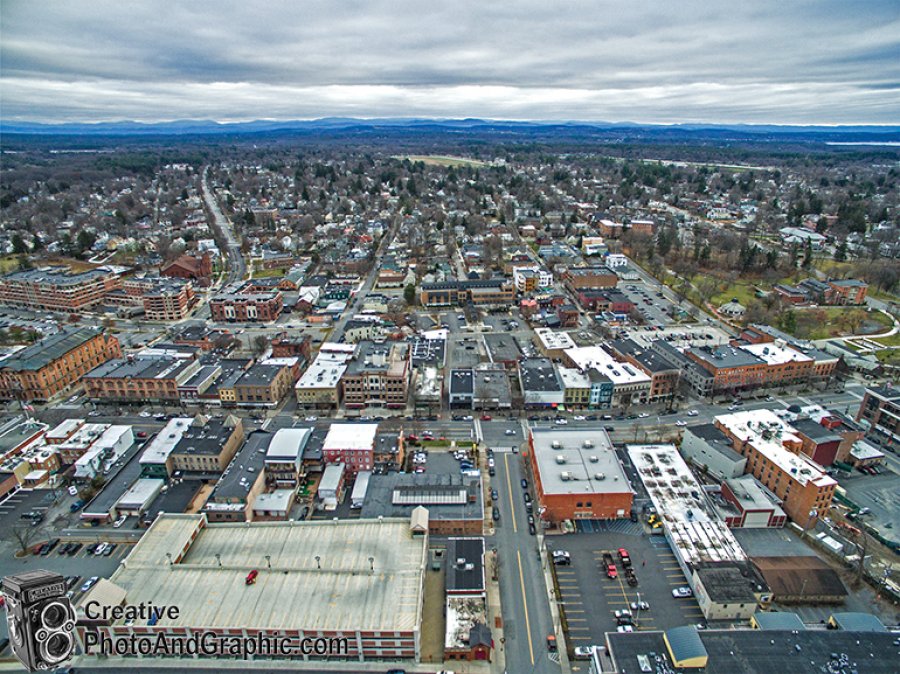
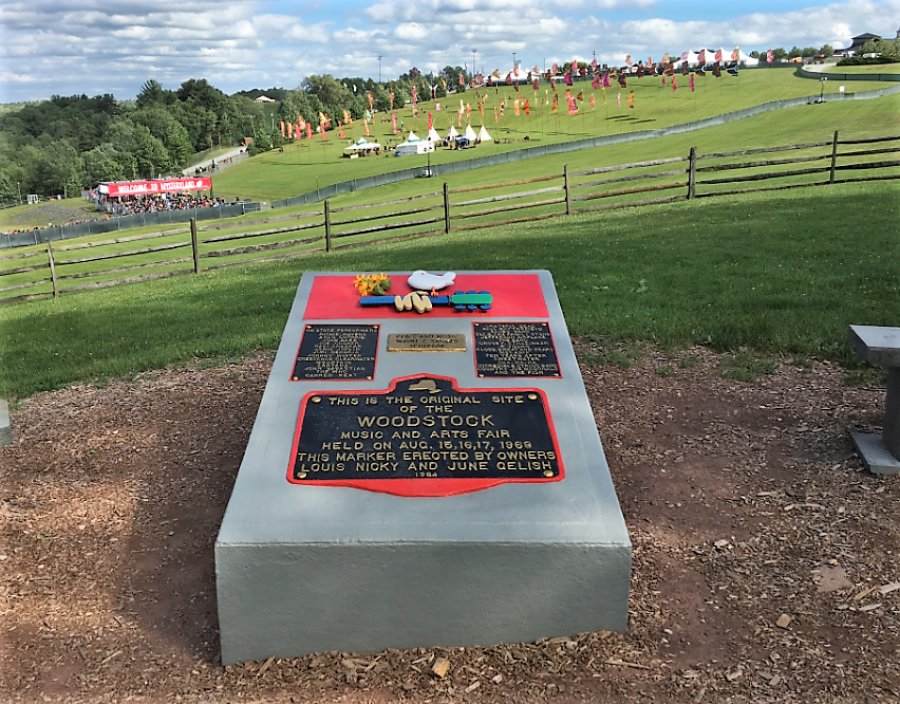
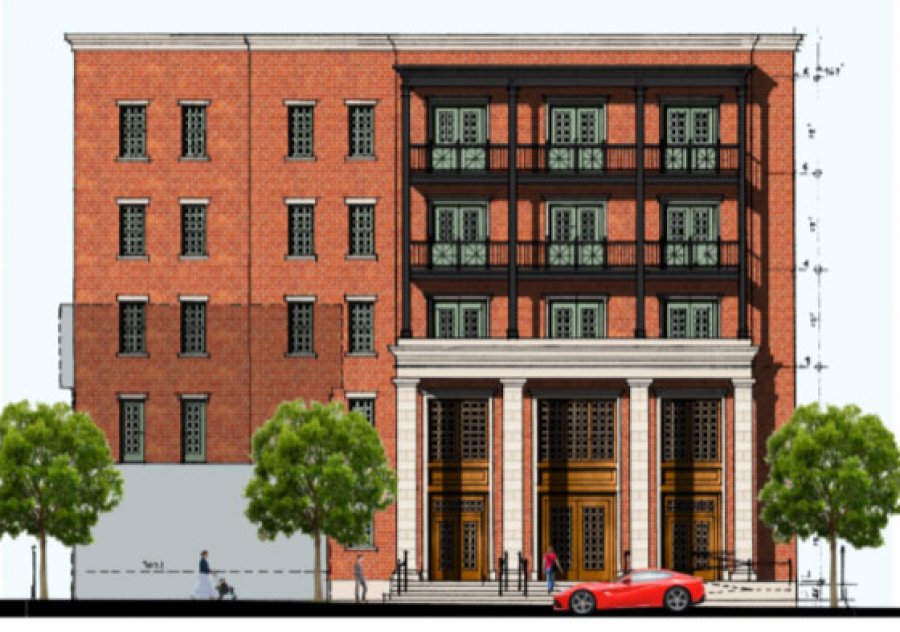


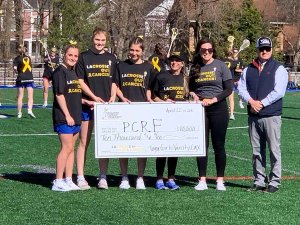
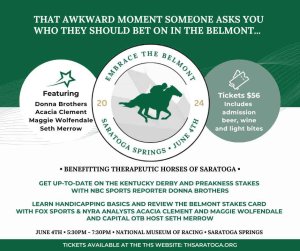


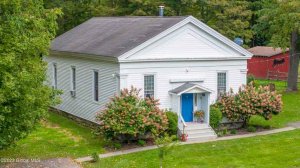
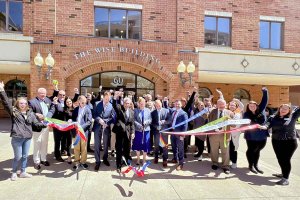


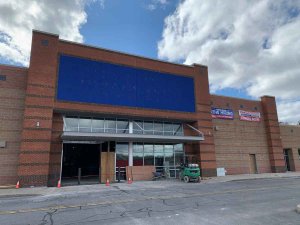
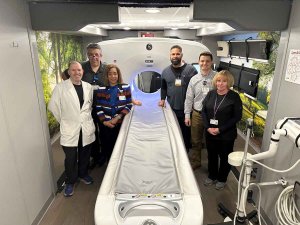
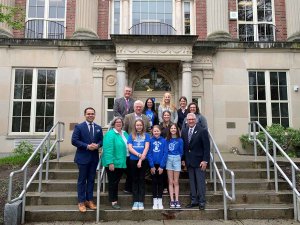
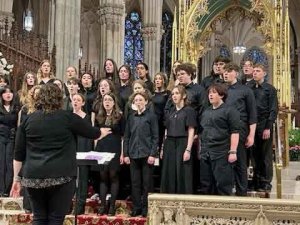






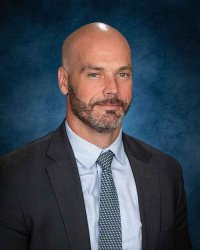

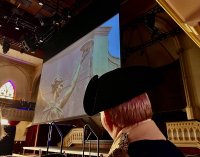

 How to resolve AdBlock issue?
How to resolve AdBlock issue? 









